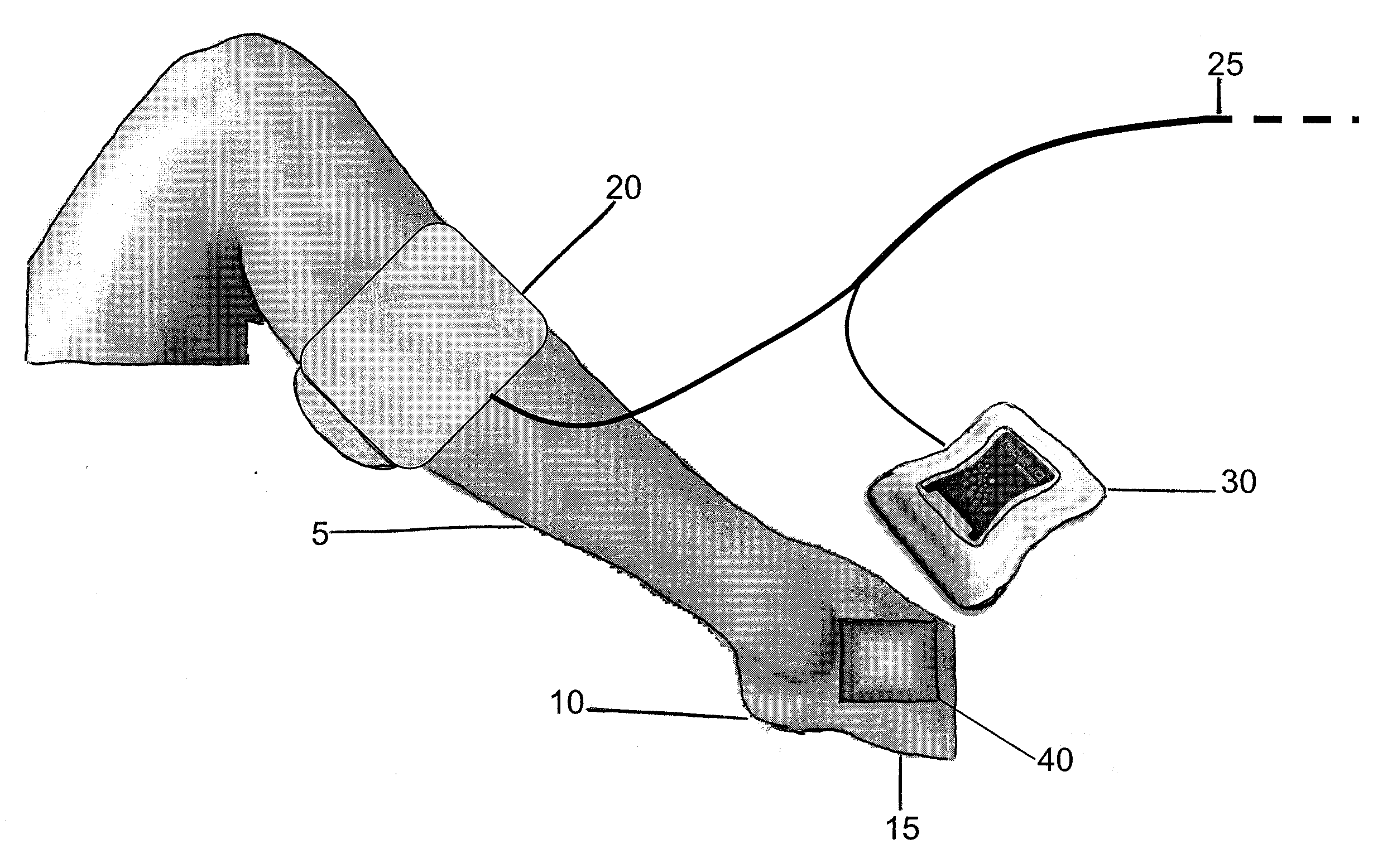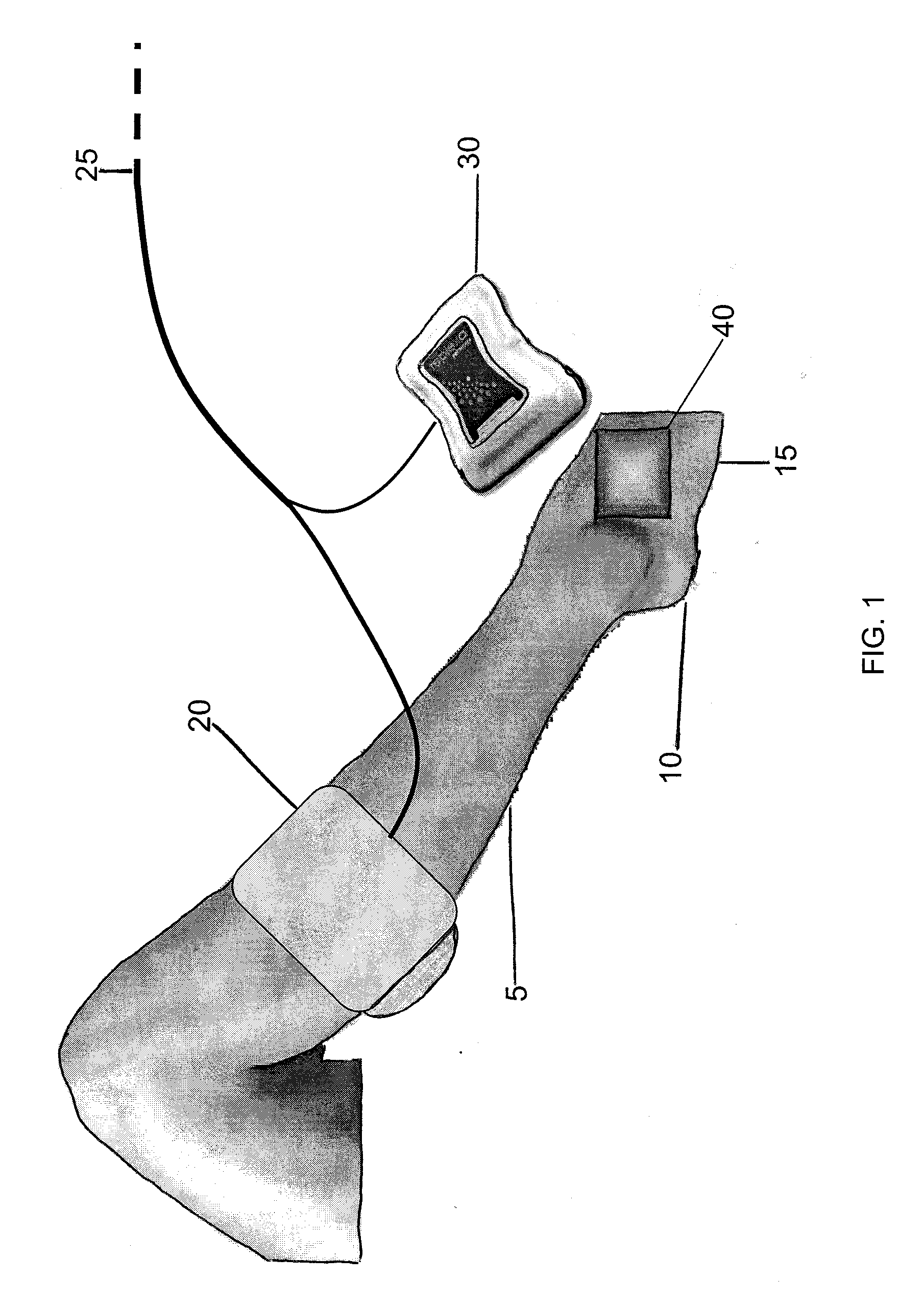Method of treating a severe diabetic ulcer
- Summary
- Abstract
- Description
- Claims
- Application Information
AI Technical Summary
Benefits of technology
Problems solved by technology
Method used
Image
Examples
examples
[0052]A). PEMF Applications 1 and 3
[0053]Materials: Culture media (MEM) was obtained from Mediatech, Inc. (Herndon, Va.) for general culture of HEL (human embryonic lung fibroblasts). Fetal calf serum, penicillin / streptomycin, trypsin, 1× PBS, sodium pyruvate, and non-essential amino acids were purchased from VWR. Human embryonic lung fibroblast Cell Culture. Cells were obtained from Barrow Neurological Institute. Routine culture was performed as described (Ham and McKeehan, 1978). Briefly and as described below, cells were cultured in 10 cm plates at a density of 1.14×104 cells / cm2 in minimum essential media (MEM) supplemented with 1 mM sodium pyruvate, 1 mM non-essential amino acids, 100 units penicillin, 100 μg streptomycin, and 5% FCS. Cells were used for experimentation after 16 hours in a humidified incubator at 37° C. with 5% CO2. Cells were used for experimentation from passage 10-16.
[0054]Methods including PEMF conditions: Treatment was performed by exposing cells to PEMF a...
PUM
 Login to View More
Login to View More Abstract
Description
Claims
Application Information
 Login to View More
Login to View More - R&D
- Intellectual Property
- Life Sciences
- Materials
- Tech Scout
- Unparalleled Data Quality
- Higher Quality Content
- 60% Fewer Hallucinations
Browse by: Latest US Patents, China's latest patents, Technical Efficacy Thesaurus, Application Domain, Technology Topic, Popular Technical Reports.
© 2025 PatSnap. All rights reserved.Legal|Privacy policy|Modern Slavery Act Transparency Statement|Sitemap|About US| Contact US: help@patsnap.com


